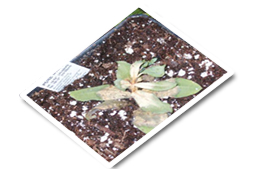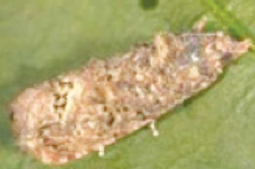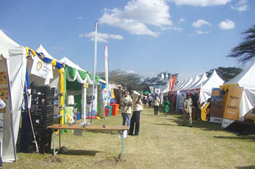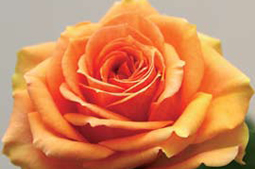
What is Botrytis:
There are over 50 different pathogenic species of Botrytis. In horticulture, Botrytis cinerea is the most common and has the largest host range. Botrytis cinerea (Botrytis from Ancient Greek meaning “grapes” plus the Neo-Latin suffix –itis for disease) is a necrotrophic fungus that affects many plant species.
Its common names include gray or brown mold, bacterial soft rot, blossom blight, leaf blight, stem canker, crown rot, and damping off or seedling blight. Botrytis is estimated to cause more economic loss in ornamentals than any other disease.
It affects a wide range of plants, including ornamentals, fruits and vegetables. Especially susceptible are wine grapes, strawberries, and flowers with thick succulent petals, such as begonias, peonies and geraniums. It also commonly affects African violets, dahlias, pansies, snapdragons, zinnias, chrysanthemums and many others.

 Alittle animal causes a big fuss in the ornamental and horticultural industry today. Dutch media reports on how an increase in the discovery of the false codling moth (Thaumatotibia leucotreta) in roses imported from Kenya and Tanzania could form a threat to floricultural trade. But what is going on?
Alittle animal causes a big fuss in the ornamental and horticultural industry today. Dutch media reports on how an increase in the discovery of the false codling moth (Thaumatotibia leucotreta) in roses imported from Kenya and Tanzania could form a threat to floricultural trade. But what is going on? Ask those who work in the floral industry, “why do people buy flowers?” and you will get numerous answers delivered with great confidence. Some of these answers may even be correct. However, we can’t be certain which ones are the real reasons consumers buy flowers. Turns out, asking consumers such a direct question will not reveal the most accurate answers.
Ask those who work in the floral industry, “why do people buy flowers?” and you will get numerous answers delivered with great confidence. Some of these answers may even be correct. However, we can’t be certain which ones are the real reasons consumers buy flowers. Turns out, asking consumers such a direct question will not reveal the most accurate answers. Corteva Agrisciencies opened the third in a series of new offices in Africa, parts of plans to increase sales on the continent within the next few years. The growth plan are based on two-pronged strategy that centres around offering technical support and experience to farmers and other agricultural professionals locally.
Corteva Agrisciencies opened the third in a series of new offices in Africa, parts of plans to increase sales on the continent within the next few years. The growth plan are based on two-pronged strategy that centres around offering technical support and experience to farmers and other agricultural professionals locally. Even though the rose industry has been under pressure over the last year, the attendance at the Naivasha Horticultural Fair does not seem to be affected. As statistics show, this year it even seems to become the biggest edition so far. “It is once again receiving plenty of bookings certainly on par with other years”, says Naivasha Horticultural Fair Chairman Richard McGonnel.
Even though the rose industry has been under pressure over the last year, the attendance at the Naivasha Horticultural Fair does not seem to be affected. As statistics show, this year it even seems to become the biggest edition so far. “It is once again receiving plenty of bookings certainly on par with other years”, says Naivasha Horticultural Fair Chairman Richard McGonnel. Overproduction, low demand, high fertilizer prices, VAT that isn’t refunded by the government, unfavourable exchange rates. When talking with the growers, it’s the combination of these factors that contribute to the challenging year that many Kenyan rose growers are experiencing. Notwithstanding the Kenya Flower Council predicting a 20 percent growth of value of Kenya’s flower exports over 2019, with the summer season around the corner these circumstances are not likely to improve any time soon.
Overproduction, low demand, high fertilizer prices, VAT that isn’t refunded by the government, unfavourable exchange rates. When talking with the growers, it’s the combination of these factors that contribute to the challenging year that many Kenyan rose growers are experiencing. Notwithstanding the Kenya Flower Council predicting a 20 percent growth of value of Kenya’s flower exports over 2019, with the summer season around the corner these circumstances are not likely to improve any time soon.